MXA RACE TEST: THE REAL TEST OF THE 2025 YAMAHA YZ450F
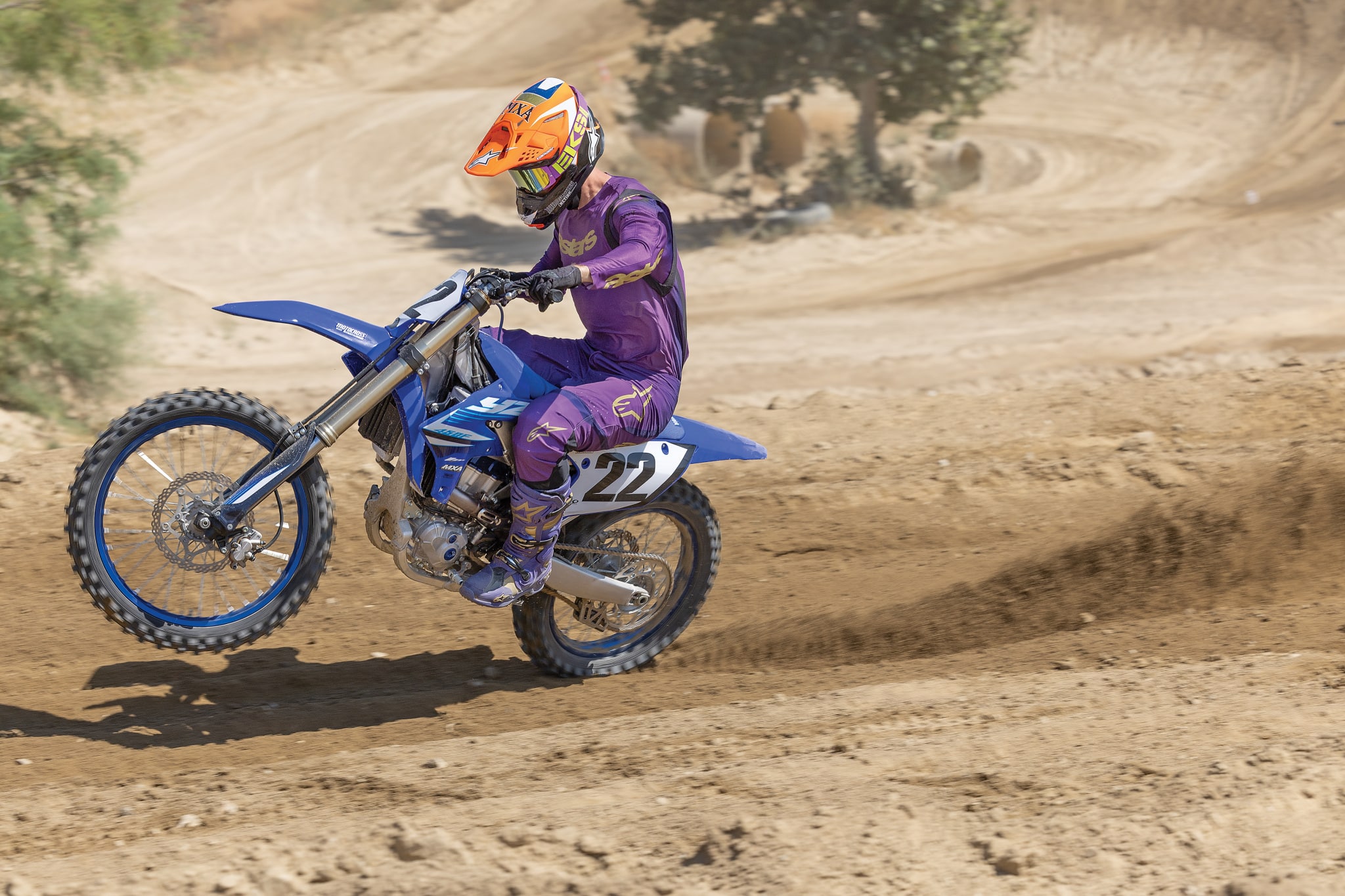 THE GEAR: Jersey: Alpinestars Super Champ LE, Pants: Alpinestars Super Champ LE, Helmet: Alpinestars M10, Goggles: EKS Brand Lucid, Boots: Alpinestars Tech 10.
THE GEAR: Jersey: Alpinestars Super Champ LE, Pants: Alpinestars Super Champ LE, Helmet: Alpinestars M10, Goggles: EKS Brand Lucid, Boots: Alpinestars Tech 10.
Q: FIRST AND FOREMOST, IS THE 2025 YZ450F BETTER THAN THE 2024 YZ450F?
A: In a lot of small ways, yes, but in simple terms, the 2025 Yamaha YZ450F is a clone of the 2024 model. Yamaha prioritized a short list of areas to address.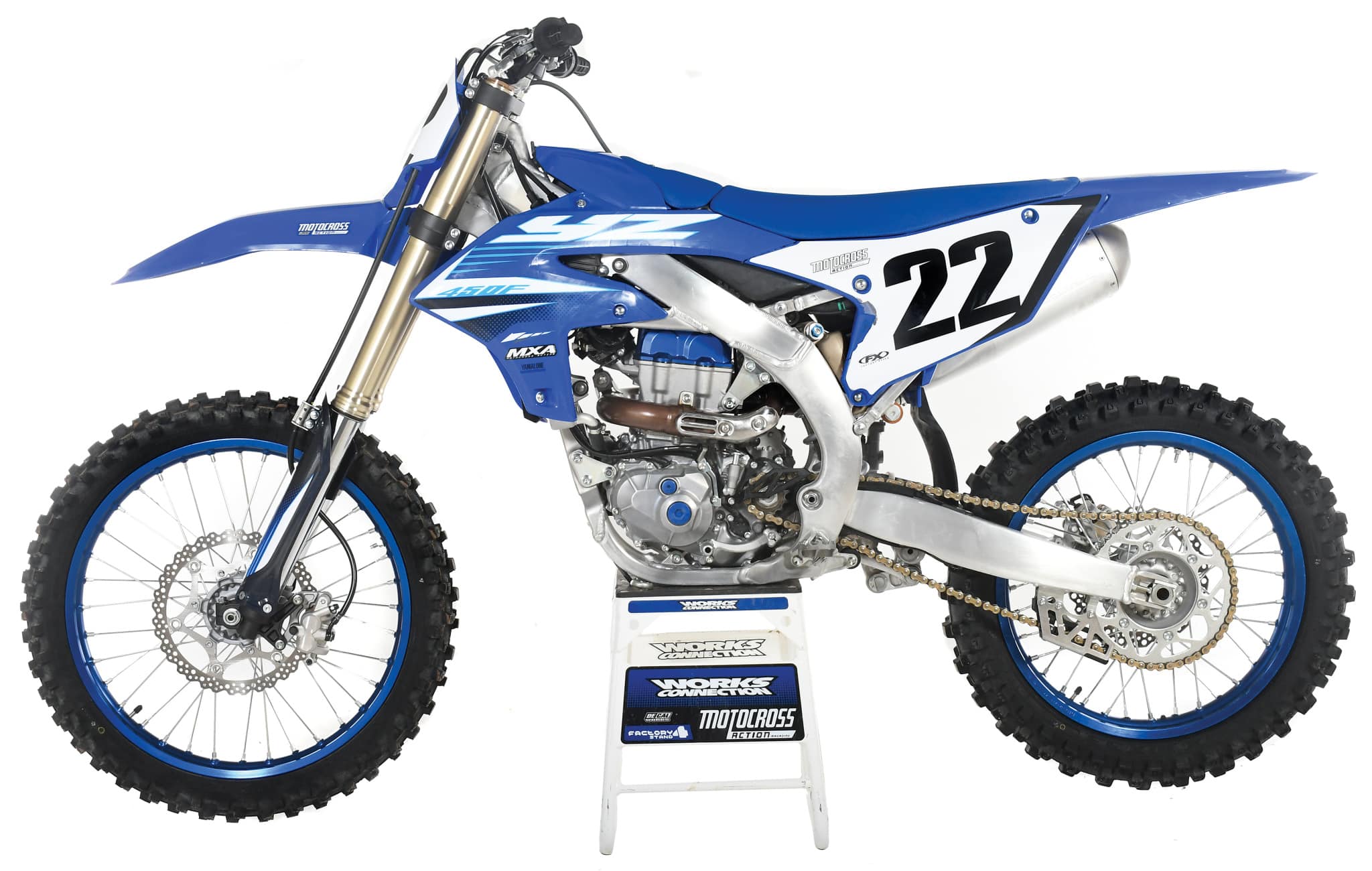 With its Kayaba SSS suspension, incredible dependability and amazingly potent powerband, the 2025 YZ450F engine is best suited to pro riders.
With its Kayaba SSS suspension, incredible dependability and amazingly potent powerband, the 2025 YZ450F engine is best suited to pro riders.
Q: WHAT ARE THE MAJOR CHANGES THAT YAMAHA MADE TO THE 2024 YZ450F?
A: If you are interested in a 2025 Yamaha YZ450F, we have listed all of the differences between this year’s model and last year’s.
(1) The rear shock has an updated linkage that improves hold-up under acceleration. This linkage is designed to make the compression damping firmer. Additionally, Yamaha changed the shock spring (from 58 N/m in 2024 to 56 N/m in 2025). The lighter spring rate works much like the previous stiffer spring rate because the new rising-rate change increases the compression damping to aid the new, softer 56 N/m spring
(2) Strangely enough, the 2025 YZ450Fs Kayaba SSS forks employ a unique strategy, making some components softer, then offsetting the softness with a change to the damping to offset the original change. For example, the Kayaba SSS forks get softer, 20 N/m pressure springs, but then Kayaba tripled the spring preload to make the fork ride higher under the initial load. Increased compression damping at the beginning of the stroke helps the SSS forks produce a more linear feel.
Internally, the valving on the fork’s rebound circuit does not rely on round shims; instead, it has delta-shaped shims with cutouts for a straight-through flow of fork oil in the main fork valve. The goal is a more linear damping curve at all piston speeds.
(3) Yamaha updated the clutch inner hub by increasing the number of lubrication ports from six vent holes to 18. The added oil flow keeps the clutch plates cooler and better lubricated. Hinson pioneered this advancement many years ago. Additionally, the shock-absorbing rubber bumpers got a new shape to help absorb clutch jolt; however, what the Yamaha YZ450F clutch really needs is a stiffer Belleville-washer clutch spring to ensure a more accurate release.
(4) Yamaha’s new ECU switch box incorporates an updated design to keep water from shorting out the system and to keep your hand from hitting the kill button when trying to change maps. Basically, Yamaha built moats around the control buttons.
(5) For 30 years, Yamaha riders have complained of a malady known as “Yama-thumb.” It occurs when the throttle housing rubs a hole on the rearward knuckle of the rider’s thumb. The common cure over the last three decades was straighter handlebars with less sweep. Yamaha’s 2025 cure is to increase the gap between the throttle housing and the grip by 10mm.
 New cut-down footpeg mounts.
New cut-down footpeg mounts.
(6) If you raced a 2023–2024 YZ450F, you probably noticed that your feet would end up on top of the over-size footpeg bracket instead of the footpeg. For 2025, Yamaha sloped the footpeg bracket to make more room for the rider’s boot.
(7) In what has become almost a bi-annual tradition, Yamaha loves to change its engine mounts and head stays, swapping back and forth between steel and aluminum in alternating years. For 2025, Yamaha got rid of the two, sandwiched, 4mm-thick steel engine mounts and replaced them with single-plate lower mounts with a little extra meat on them.
(8) The Yamaha has a new, grippier seat cover, but the domed shape of the seat is a real pain in the derriere—and the minimal amount of foam padding at the rear of the seat doesn’t help.
(9) The new 2025 YZ450F retails for $9999, which is exactly what the YZ costs in 2024. Honda also kept the same MSRP for its all-new CRF450, albeit at $9699.
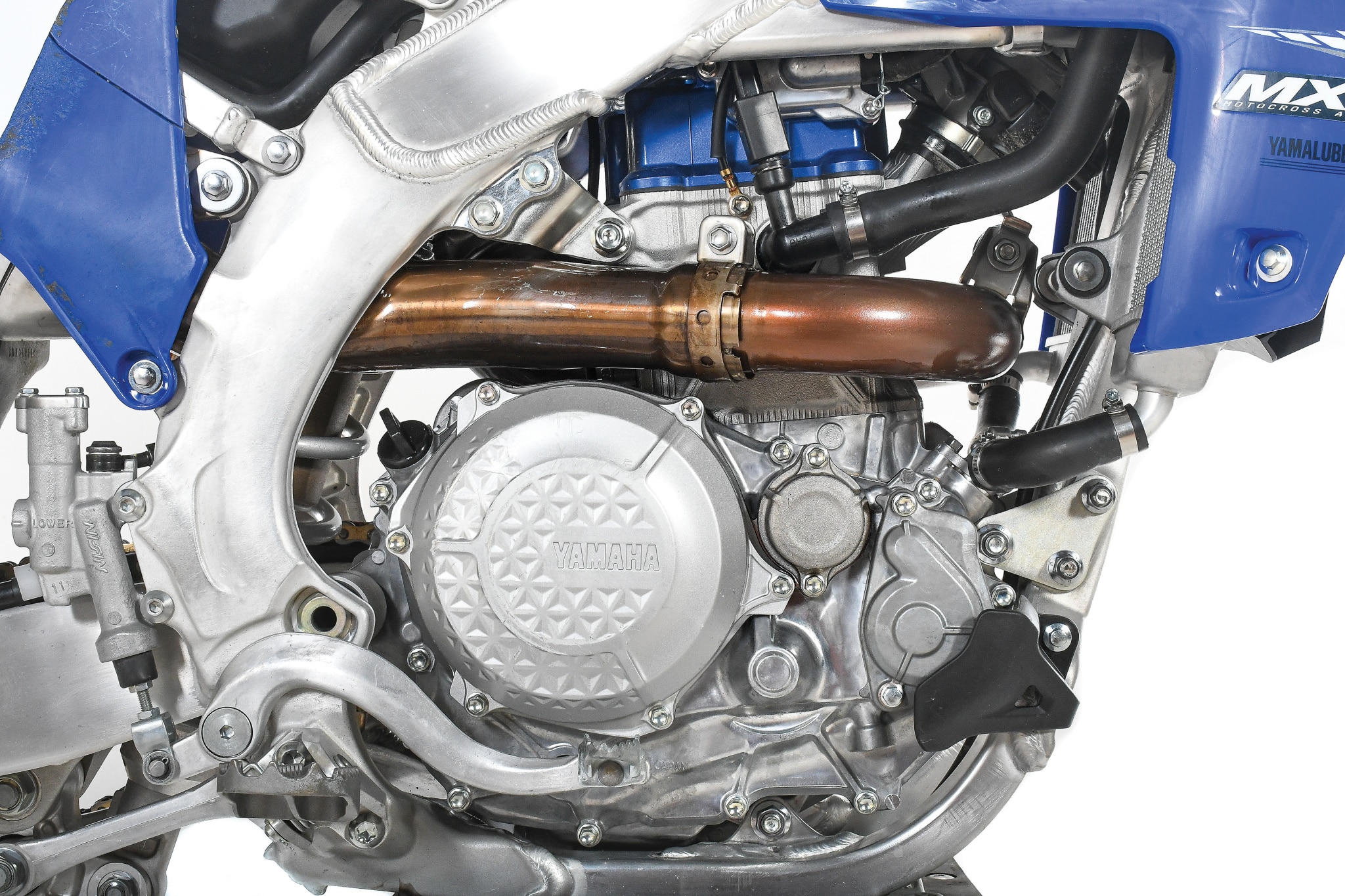 The YZ450F engine doesn’t make the most horsepower in the 450 class, but it feels like it does.
The YZ450F engine doesn’t make the most horsepower in the 450 class, but it feels like it does.
Q: WHAT IS THE 2025 YAMAHA YZ450F’S GREATEST ATTRIBUTE?
A: The strange thing about the 2025 Yamaha YZ450F is that its most positive attribute is that it rips! As it sits on the showroom floor, you’d never guess that it would be so hyperactive at the crack of the throttle. It is paradoxical that the YZ450F’s greatest attribute is also its worst attribute. All of this power works against the rider by overpowering the chassis and causing it to be twitchy at speed. The bike wheelies out of every corner, pops out of ruts, snaps the chassis slightly askew and surprises the rider with too much of a good thing.
One wonders why Yamaha’s engineers were focused on building the most powerful motocross bike possible without worrying that it might be too much for the average consumer of YZ450Fs. Face it, if you want to get the holeshot, this is the bike for you, but Novice riders better be beware.
Virtually every serious Yamaha YZ450F rider uses the GYTR Power Tuner to remap the ECU to deliver mellower power. How much mellower? MXA had Yamaha’s test department build us four different maps for the 2024 YZ450, each one mellower than the one before. We chose the mellowest map last year, but on the 2025 YZ450F, we were able to lessen the scare factor in only two map attempts instead of four.
The 2025 YZ450F maximizes the connectivity between the throttle and the rear wheel. In one sense, that is good, because it enhances both traction and acceleration; however, the extreme hookup made the bike twitchy, as the rear tire hunted for the optimum path. Luckily, after the initial jolts, the engine’s power was surprisingly linear. There are no dips, surges or violent surprises from the midrange on up, especially if you download a mellower map or don’t turn the throttle on all the way.
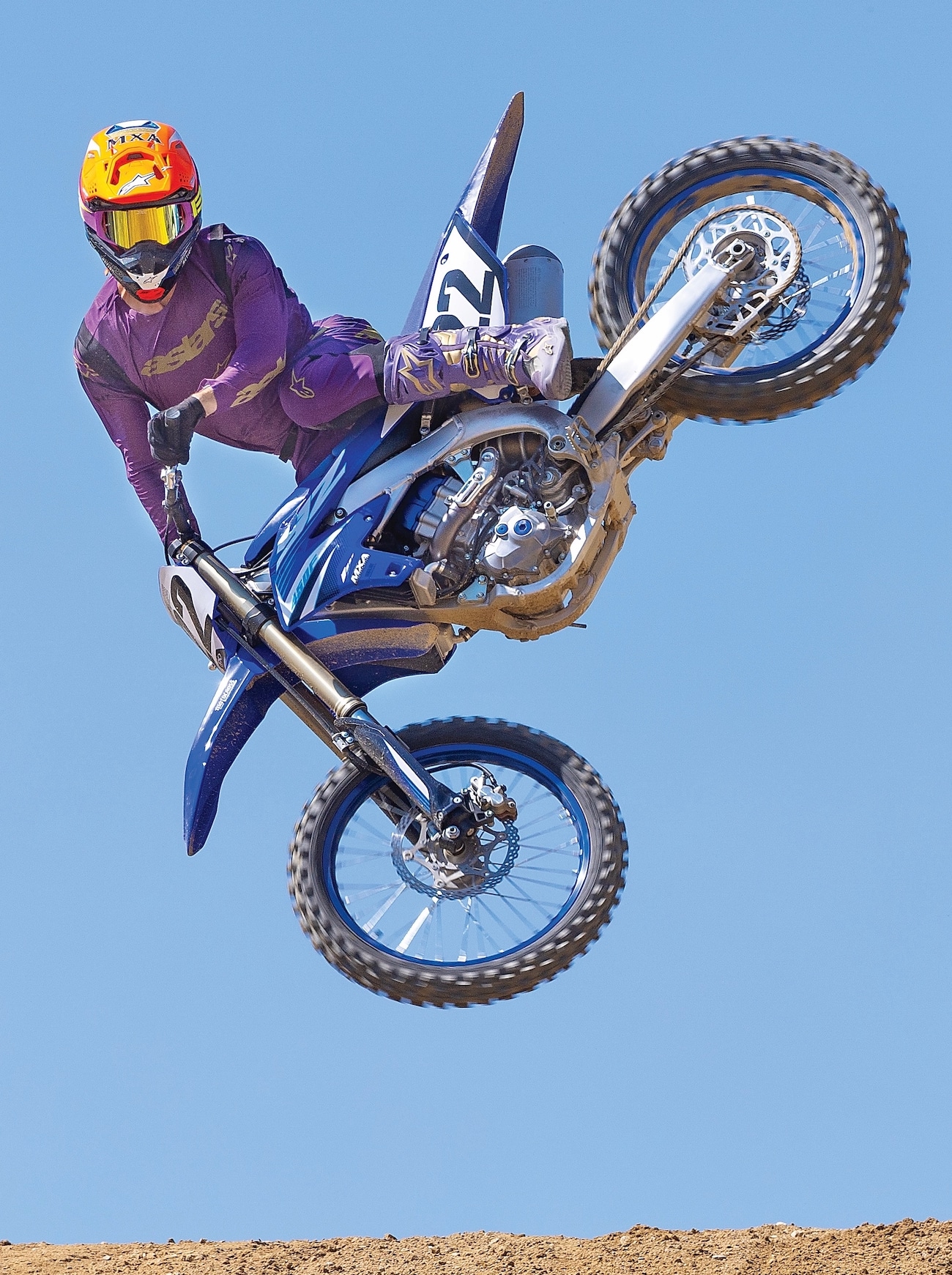 With its great suspension, laser-quick throttle response and twitchy handling, the YZ450F is always in an internal battle with itself.
With its great suspension, laser-quick throttle response and twitchy handling, the YZ450F is always in an internal battle with itself.
Q: WHAT IS THE 2025 YAMAHA YZ450F’S SECOND GREATEST ATTRIBUTE?
A: The Kayaba SSS coil-spring forks have dominated the motocross suspension world since they were first introduced back in 2006. That doesn’t mean they haven’t been updated over the years to keep up with the times, but it does mean that the typical changes are to make them stiffer—often to the point of being too stiff—and then to use the next model year to make them softer, often to the point of being too soft. 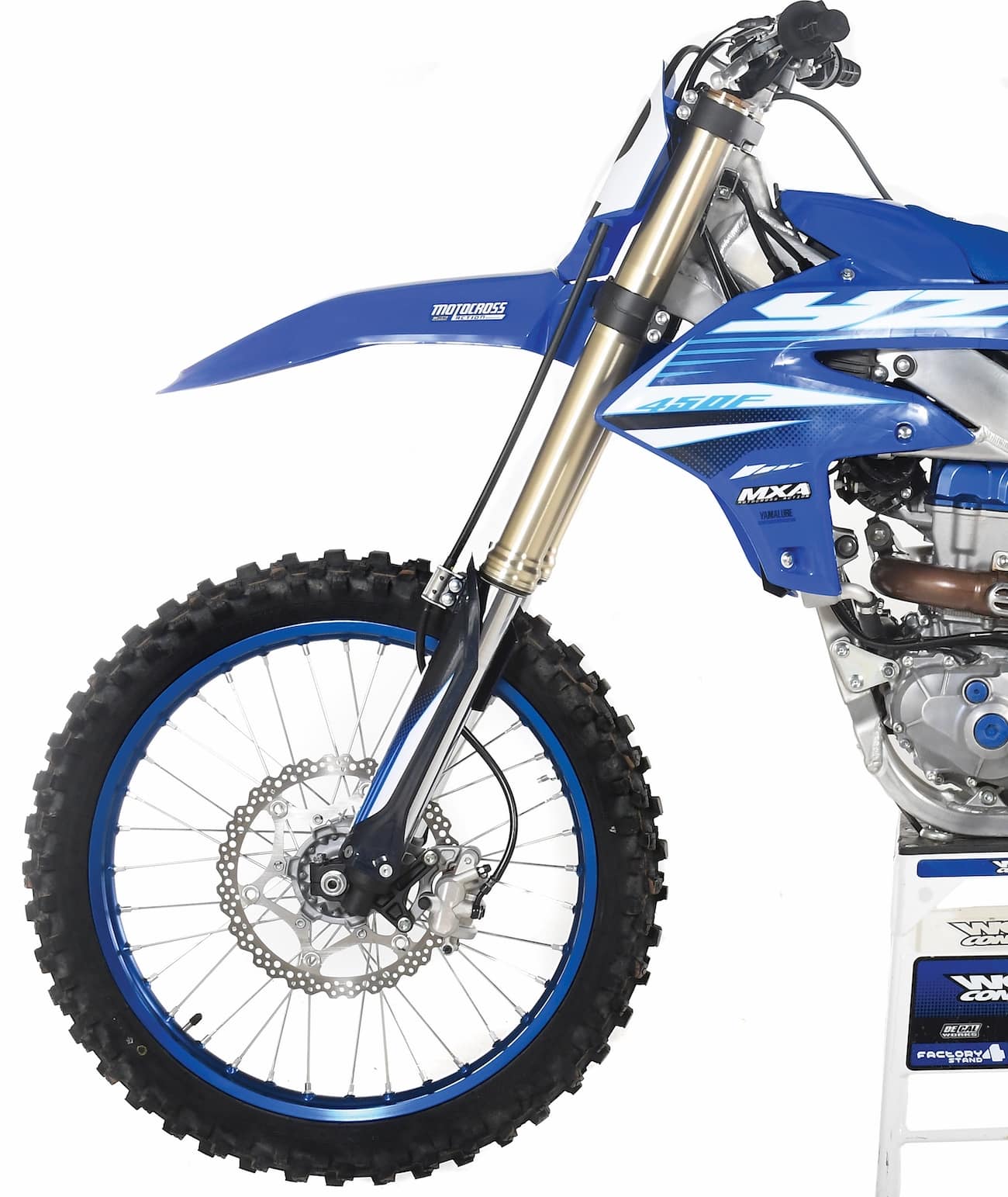
For 2025, the YZ450F forks are on the soft side and generated a lot of complaints from MXA’s fastest test riders. The Vets and Novices liked them. Yamaha and Kayaba have been able to satisfy the higher and lower skill levels with one fork in the past, but modern tracks and riding styles have created a greater divide between the skill levels.
Yamaha did try to bridge the gap by going with softer pressure springs to help the slower riders while adding a lot more spring preload to the 20 N/m pressure springs to make them feel more like last year’s 22 N/m pressure springs.
Kayaba played a weird game of hopscotch with the SSS fork setup and doubled down on the shock setup with a softer 56 N/m shock spring and a freer-flowing and straighter oil path through the piston, thanks to the Delta-shaped shims on the rebound side. It is a curious and circuitous route to achieving a do-it-all suspension setup.
Q: WHAT IS THE 2025 YAMAHA YZ450F’S THIRD GREATEST ATTRIBUTE?
A: Over the last decade, Yamaha’s big-bore bikes have not been at the top of the charts when it came to handling. At their best, they were “middle of the road” handlers. That meant that they were great in a straight line, but put up a fight when it came time to dive to the inside line in a corner. They wiggled. They wagged. They pushed and tucked, but they didn’t turn as well as a Honda, Kawasaki, KTM or Suzuki. After so many years of the front end being cranky in the corners, most Yamaha riders adapted to it—or bought something else.
For 2025, virtually every Japanese-built bike went in search of Suzuki-style handling. What is “Suzuki-style handling?” It results in a bike that turns on a dime and gives back nine-cents change. It can tuck inside of any bike in a corner.
What is the downside of Suzuki-style handling? The focus on making the chassis turn in guarantees a loss of straight-line stability. Suddenly, in 2023, Yamaha forgot everything they knew about traditional YZ450F handling. The 2023, 2024 and 2025 YZ450Fs enjoyed aggressive turn-in.
What did Yamaha give up to get the YZ450F to turn like a Suzuki? The answer is simple. They gave up the same thing Kawasaki, Honda and Suzuki gave up—stability! The RM-Z450, KX450, CRF450 and YZ450F all exhibit a touch of over-steer at the front wheel and, conversely, a lot more head-shake at speed. Oversteer and head-shake were not words previously in the Yamaha owner’s vocabulary, but they are now. The Yamaha went from being unerringly calm at speed to being a nervous dancer that hunts and pecks for optimum traction. But, and this is a big but, the public embraced this new-generation chassis. They want bikes that turn and were willing to give up straight-line stability to get it.
Q: HOW CAN YOU MAKE A 2023–2025 YZ450F BETTER?
A: Even though the MXA test riders were unanimous in picking the 2023–2024 YZ450Fs as our “450 Shootout” winners, we weren’t as in love with the 2025 bike. But, that’s because the earlier bikes were more of a revelation, while the 2025 YZ450F is a re-run. Here is our hit list.
Maps. We tried to stick with the stock map (when the blue light is not lit), but the YZ450F’s powerband was a handful. We went mellower on the mapping (and we mean mellower than Yamaha’s pre-installed mellow maps).
Head-shake. The simplest way to fight the YZ450F’s tendency to head-shake at speed is to not go so fast. Barring that, we slid the forks as far down into the triple clamps as possible. This made the head angle slacker and calmed down the oscillation of the front end over rough ground.
Steering stem. We utilized the “poor man’s steering damper” in a pinch. After tightening the steering stem nut, the loose feeling of the YZ450F’s front end went away. Do not tighten it too much.
Oversteer. The front wheel would want to tuck if it got too much steering input on corner entrance. Sliding the forks down to lessen head-shake did double-duty by calming down the oversteer at turn-in.
Airbox. We ran a Twin Air PowerFlow kit in place of the stock YZ450 air filter. The upside was slightly faster rev and more pull through the middle. The downside was that it didn’t use a backfire screen. If dirt fell in, as it did on occasion, we used a shop vac to suck the dirt out of the throttle body.
Triple clamps. Luxon’s Gen3 Pro clamps offer adjustable offsets of 21mm, 22mm (stock), 23mm and 24mm. Every MXA test rider felt that the 23mm offset calmed down the steering and kept the front end tracking straight.
Seat. None of the three YZ450F models (2023, 2024 or 2025) have what anyone would call a comfortable seat. The seat has a different shape for 2025, but it is just as irritating as the flat-top pyramid shape of the first two model years. We switched to a Guts Racing seat that had a more traditional profile.
Holeshot device. We positioned our Works Connection Pro Launch starting device at 130mm down, but when we started on a metal-grid starting grate, we went to 160mm.
Exhaust. Since we weren’t looking for more power out of the 2025 YZ450 engine, we wanted an aftermarket pipe that smoothed out the power and made the power more linear. We tested the FMF, Pro Circuit, Yoshimura, DR.D, HGS and stock pipes. The test riders’ votes were split between FMF and Pro Circuit.
Hydraulic clutch. GYTR offers a hydraulic clutch kit that bolts on. Most MXA test riders preferred the feel of the hydraulic clutch over the stock cable clutch. It was less snappy, offered a bigger actuation window and was blessed with broader modulation. However, there was one caveat. Since MXA tests over 25 bikes a year with hydraulic clutches compared to only nine bikes with cable clutches, we are prone to like what we know best. Eli doesn’t agree with us.
 Tool-less fork clickers.
Tool-less fork clickers.
Q: WHAT DID WE HATE?
A: The hate list:
(1) Airbox. The airbox is kind of low-rent. To get the cover off of the front-mounted airbox, you have to twist the Dzus fastener bolt and then rip the plastic cover off with brute force. Additionally, the amount of noise emanating from the combination of the rear muffler and front airbox forced every MXA test rider to wear earplugs when on the YZ450F. Obviously, a downdraft design places the airbox above the throttle body, which means that if any dirt is knocked off of the air filter or cage, it is fast-tracked into the throat of the throttle body. Keep that shop vac handy.
(2) Gearing. Yamaha raised second and third gears. This made second gear much more prominent and third gear a little lazy. We geared the YZ450F up by going from the stock 49-tooth sprocket to a 48. This made a two-fold change. First, it made second gear taller, which enabled it to be used as a replacement for both second and third gears, and took the burden off third to be the primary drive gear. Second, the taller gearing cut down on some of the YZ450F’s potent bark.
(3) Crossbar pad. We finally got GasGas to drop its munchkin-sized crossbar pad in 2024, only to have Yamaha adopt it. It is one-fourth the size of a regular bar pad.
(4) Right-side panel. Some test riders, depending on the brand of boots they wore, had the top of their boot snag on the right-side body panel.
(5) Seat. Although the new seat has more grip, it isn’t comfortable.
(6) Clutch spring. Most MXA test riders felt that Yamaha’s Belleville-washer spring rate was not stiff enough for the load placed on it.
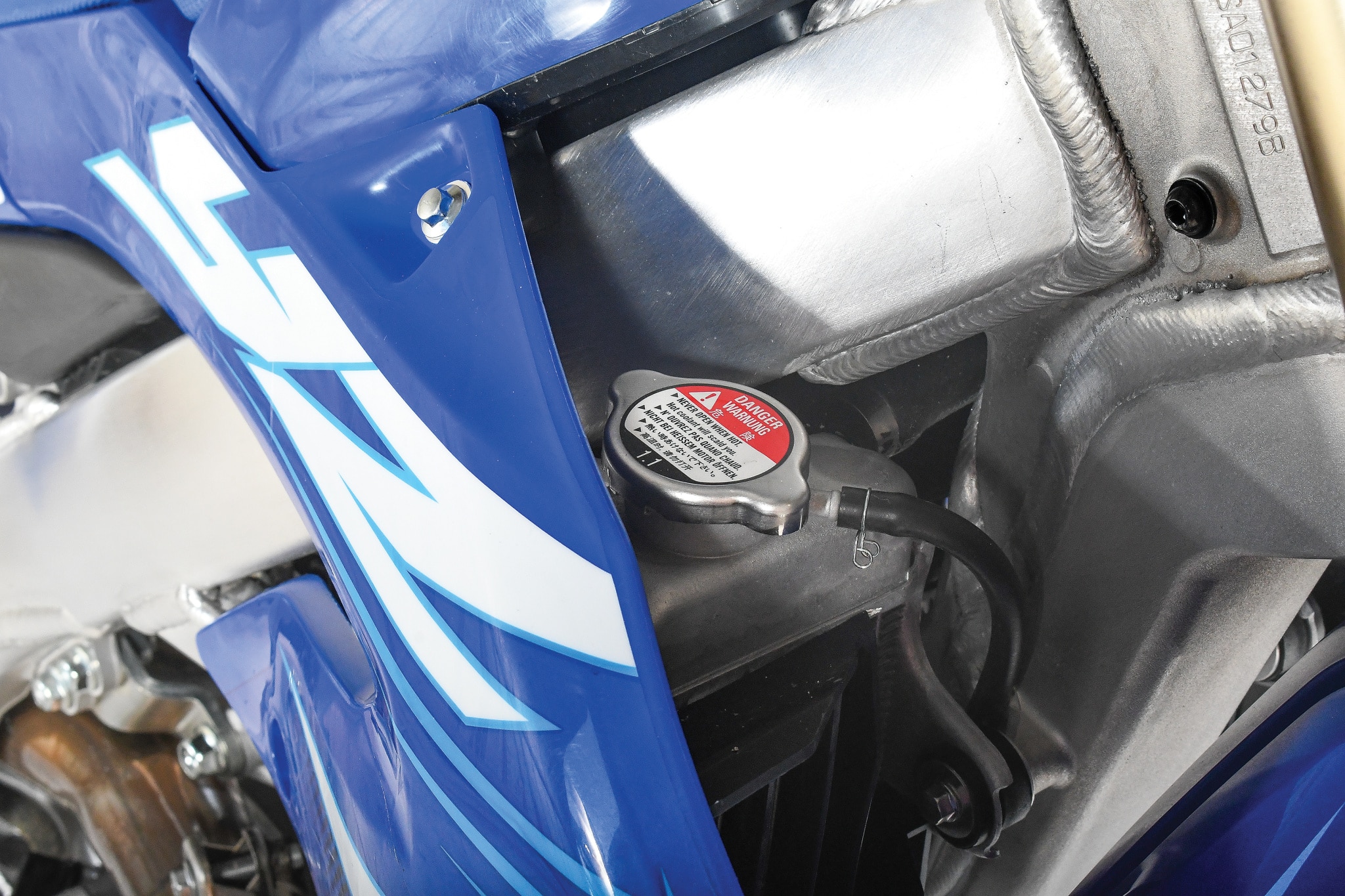 The Yamaha still needs a 1.8 radiator cap; 1.1 comes stock.
The Yamaha still needs a 1.8 radiator cap; 1.1 comes stock.
(7) Radiator cap. For some reason, the Japanese brands continue to run 1.1 kg/mm2 radiator caps (equal to 14.22 psi). European bikes and virtually all pro race bikes use 1.8 kg/mm2 radiator caps (equal to 25.6 psi). The higher the pressure, the longer the water in your radiator will resist boiling.
(8) Problem areas. MXA races every weekend, so we get to see a lot of consumer-owned YZ450Fs up close. We witnessed several YZ450F engines that snapped their connecting rods just below the top-end rod bearing. Parts to fix them were very expensive.
(9) Numbers. Based on how abrupt and powerful the 2025 Yamaha YZ450F feels, you would think that it makes the most horsepower in the 450 class, but you would be wrong. The 2025 YZ450F makes 59.48 horsepower. It is in the top three, but gets beat out of the top spot by the 60.1-horsepower Husqvarna FC450.
Q: WHAT DID WE LIKE?
A: The like list:
(1) Oil tank. Yamaha returned to its old-style, dry-sump lubrication system, and the oil tank is hidden in the front portion of the ignition cover. Clean and simple.
(2) Fork guards. The 2023 fork guards wrap around the fork legs, similar to both Honda and KTM fork guards. This cuts down on rock dings that cause fork-seal leaks.
(3) EFI Power Tuner. Yamaha’s smartphone app, GYTR Power Tuner, is a self-contained Wi-Fi device that allows engine settings to be changed via a slide bar. It also handles launch control, traction control, engine braking, lap timing and engine runtime. Additionally, it allows you to build your own maps.
(4) Clutch cover. Yamaha cast an unpainted, dimpled clutch cover to keep the rider’s boot from scratching the paint off the cover.
(5) Maps. Every MXA test rider had the mapping changed to a mellower map—much mellower. It was easy to do with Yamaha’s updated Wi-Fi Power Tuner.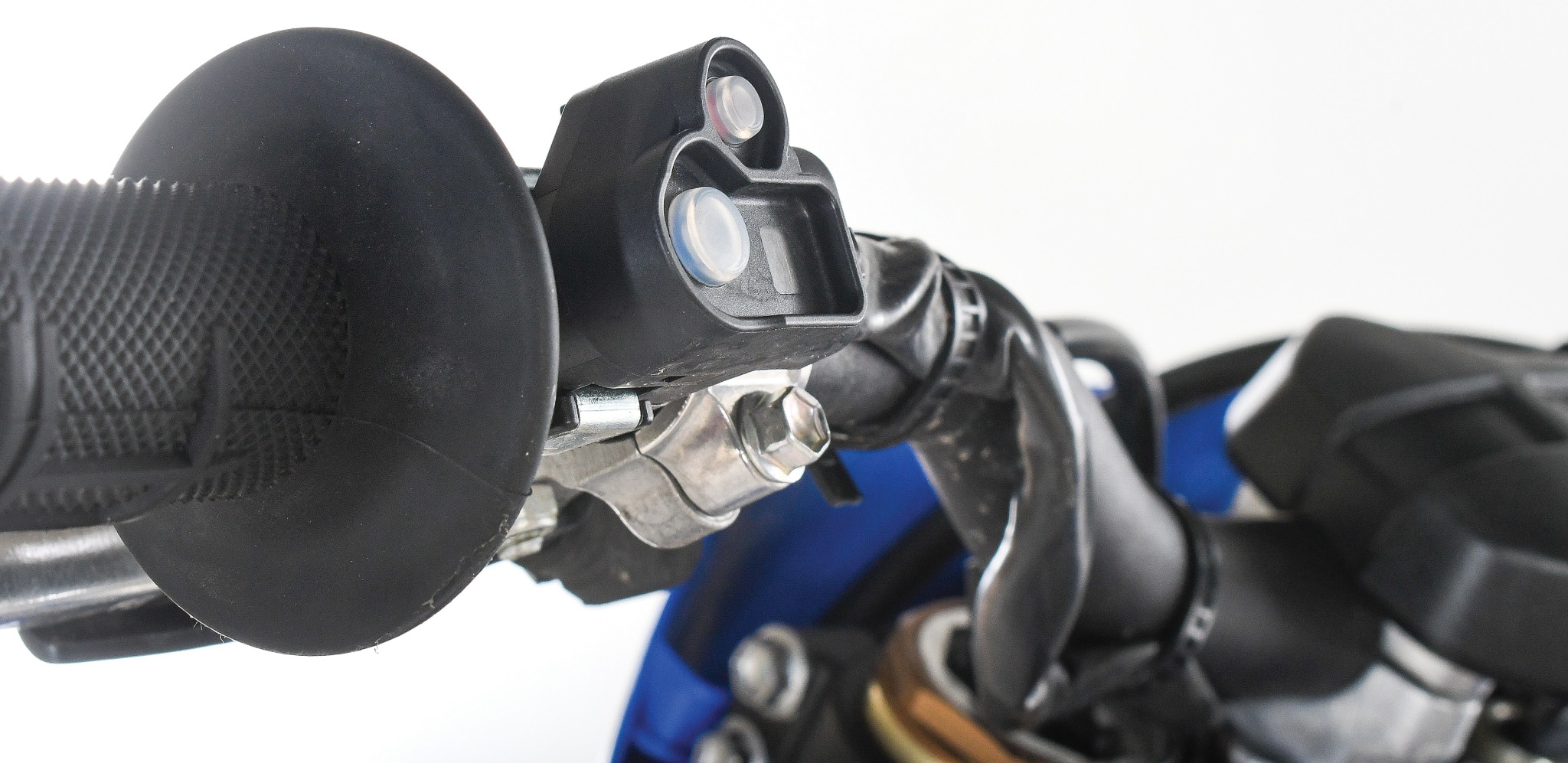 The new map switch has extra material for protection.
The new map switch has extra material for protection.
(6) EFI controller. The 2023–2024 controller had two problems: (1) It was possible to kill the engine when trying to change the map modes. (2) When power-washing your bike, water can find its way into the EFI controller and short out the system. To fix these two problems, Yamaha built moats around each button to delineate them better, keep them drier and avoid hitting them accidentally.
(7) Dependability. The YZ450F engine has a reputation for running forever but we’ve seen broken con rods. And since the new Generation YZ450F was first introduced we’ve seen no mention of updated connecting rods, new part numbers or any reference in press intro information.
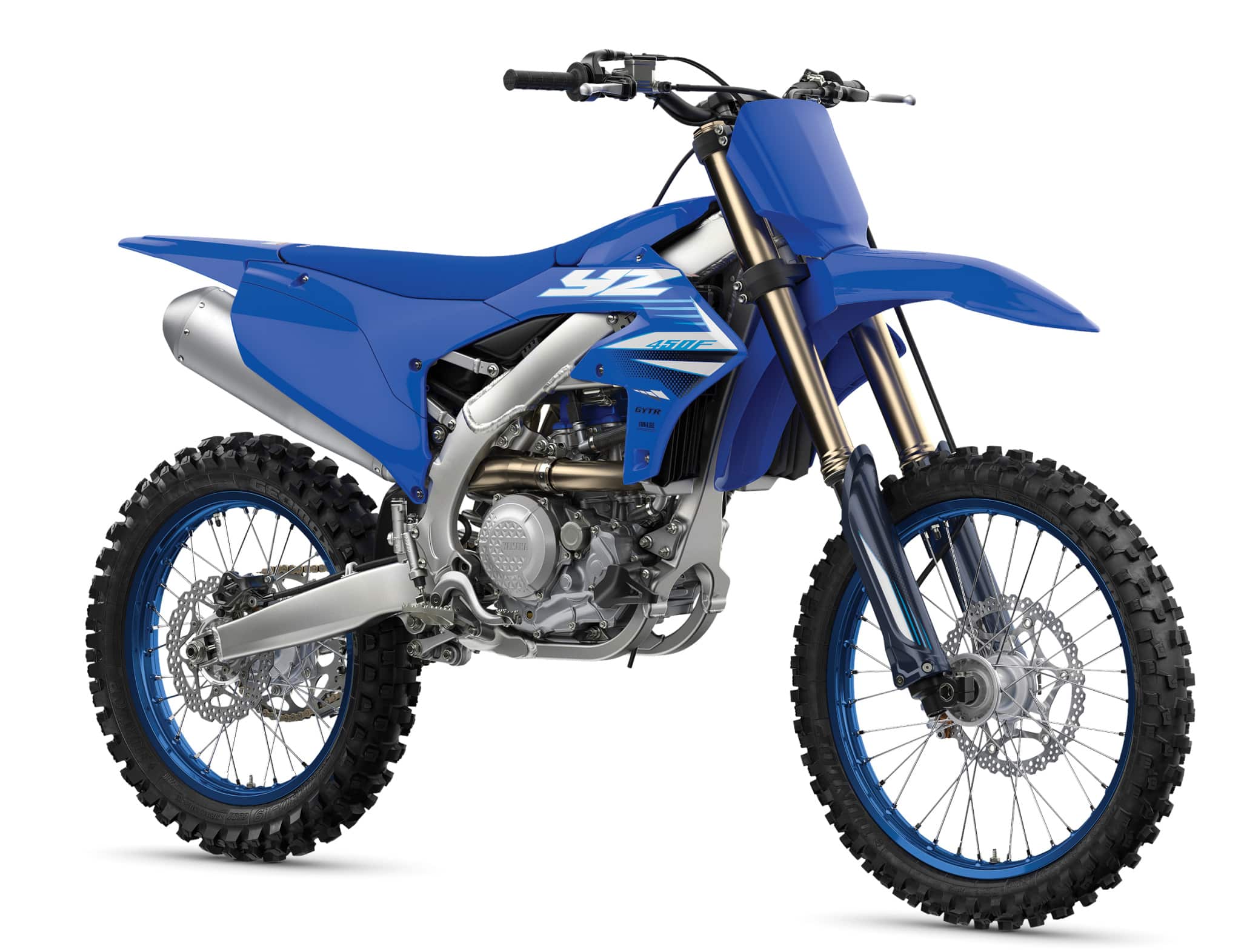 Q: WHAT DO WE REALLY THINK?
Q: WHAT DO WE REALLY THINK?
A: If you are a pro, A-class intermediate or Vet expert, the Yamaha YZ450 was made for you. There is no doubt that the 2023–2025 Yamaha YZ450F is the answer to every Yamaha racer’s prayers—if he is skilled enough to handle it. It is not the best bike for a novice, vet or old-timer.
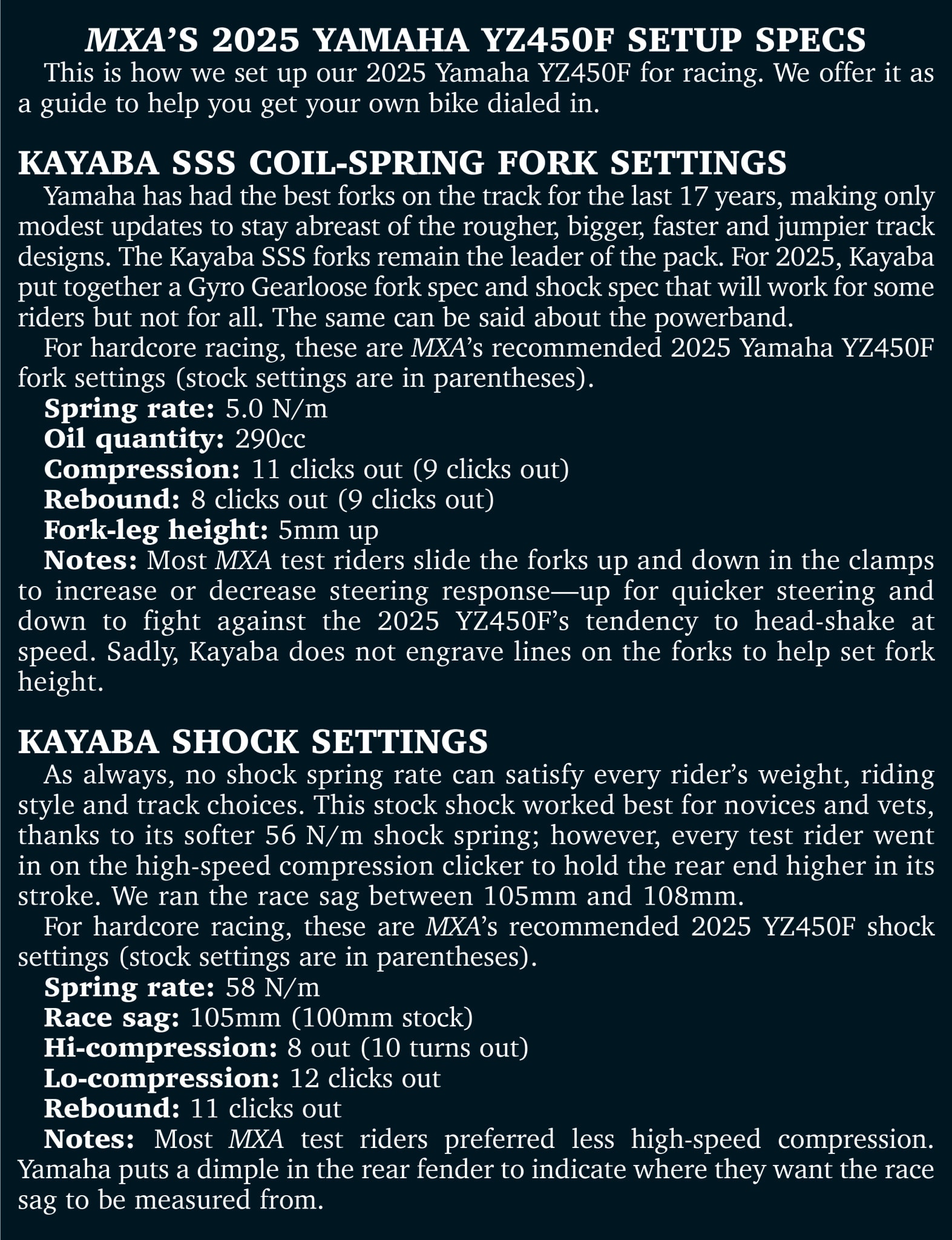


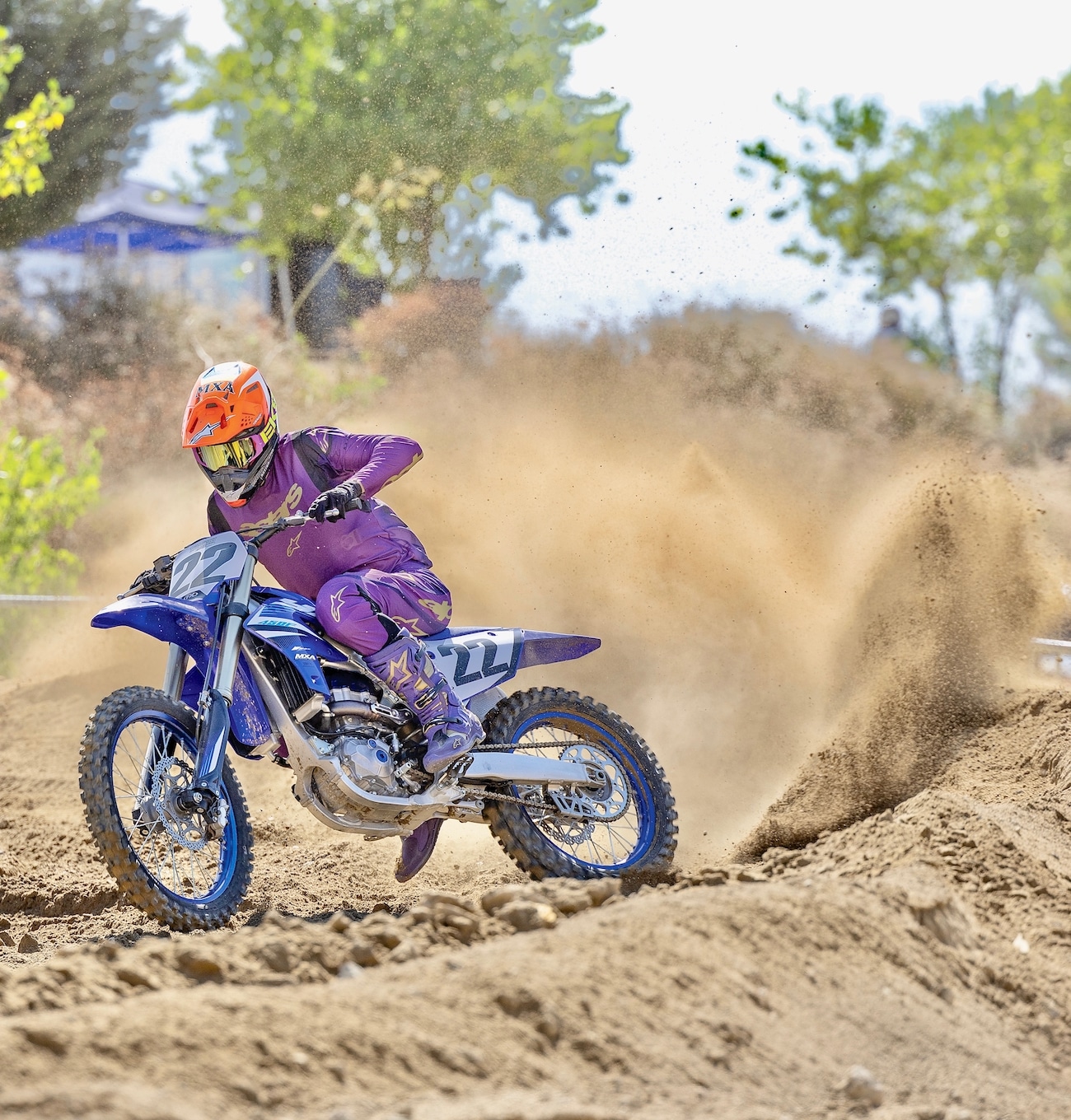
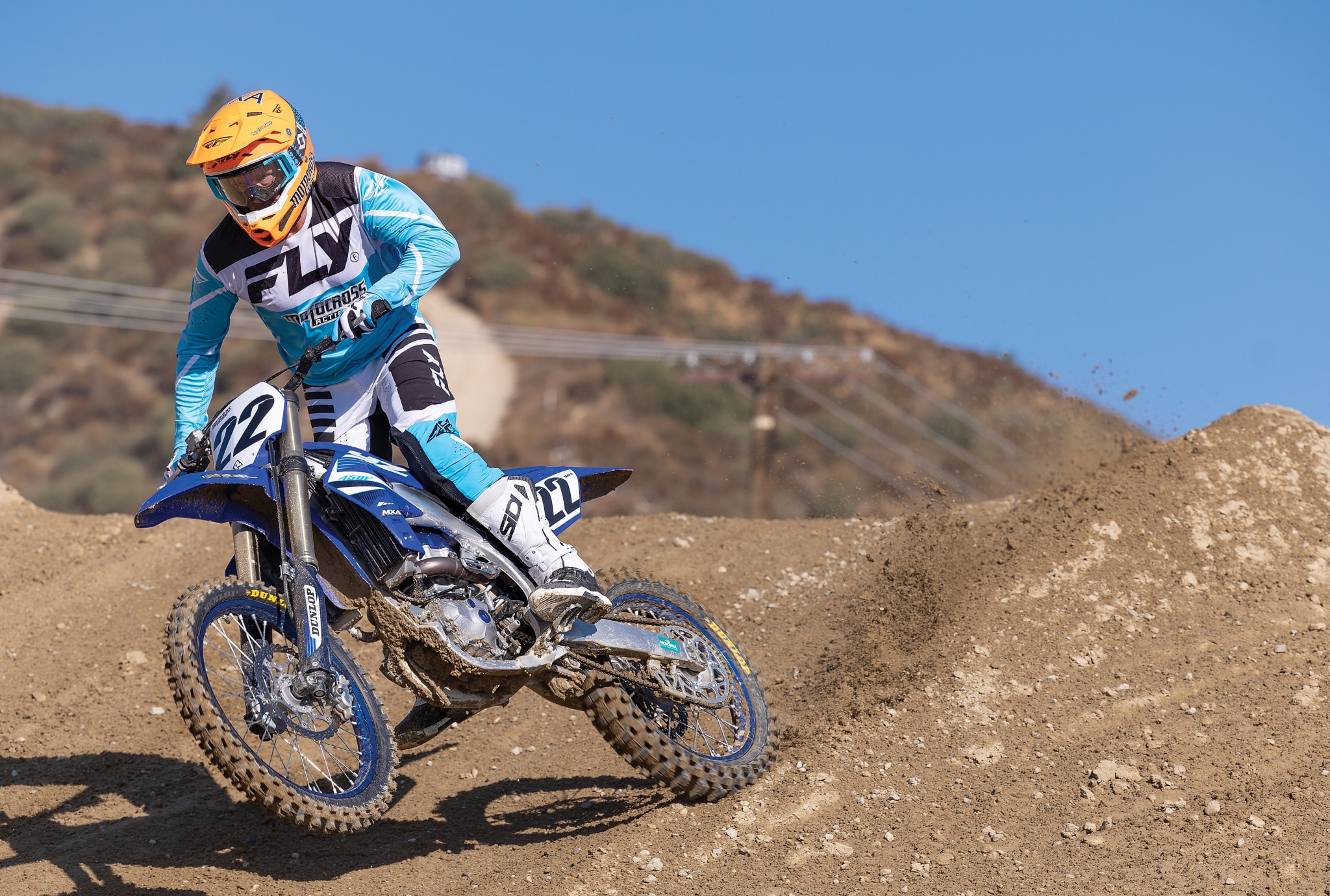

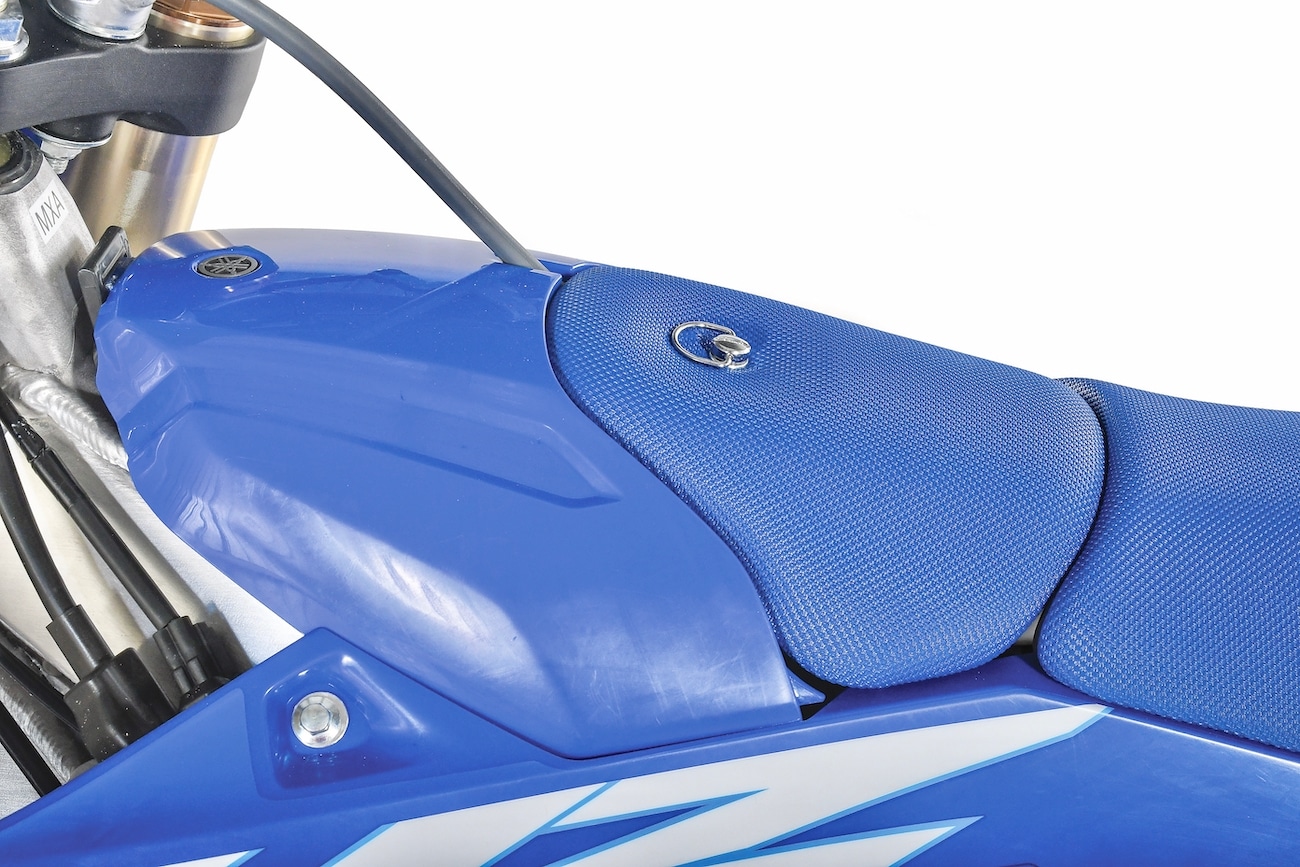



Comments are closed.